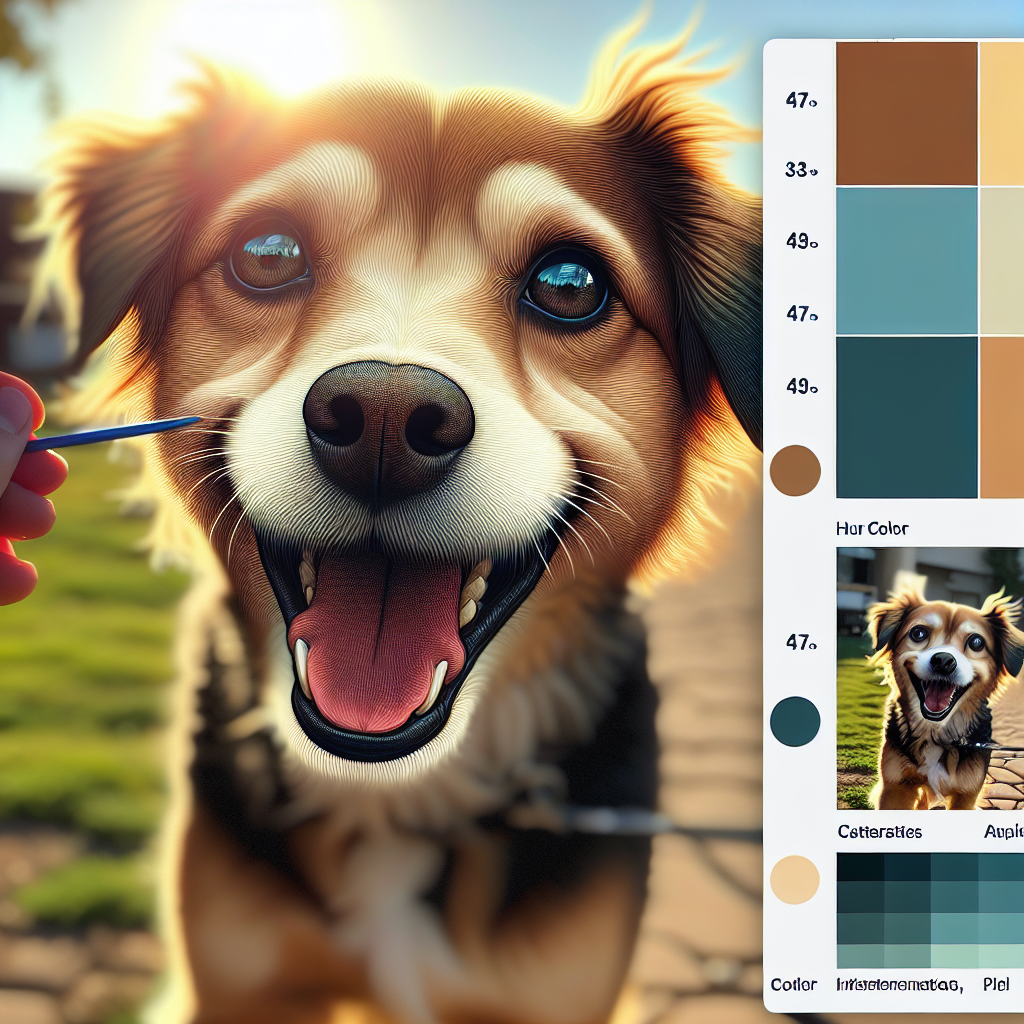Introduction

Alright, let’s dive into the flea fiasco. It’s 2023, and our feline friends have been battling these pesky bloodsuckers since…well, forever. You might be scratching your head—pun intended—wondering if your cat’s got fleas. And if so, what in the world do you do? We’ve all been there, standing in the pet aisle, overwhelmed by options.
But fear not, my fellow cat enthusiasts. Let’s take this journey together, starting with the basics. We’ll ease into the world of fleas—those tiny, hopping nuisances. You’ll learn how to spot them, why they’re a nuisance, and what steps to take when they invade your cat’s personal space. By the end of this section, you’ll know exactly what you’re dealing with and why it matters so darn much. Thanks for sticking with me—you’re doing great!
Understanding Fleas on Cats
Fleas. Those little buggers are the bane of a cat’s existence. They’re like a bad guest who just won’t leave. Understanding cat flea life cycle is key here. From eggs to adults, fleas seem to never take a break. They multiply faster than rabbits, which is saying something.
The whole shebang starts when a flea jumps onto your unsuspecting feline. The female flea lays eggs on your cat—how considerate of her—and these eggs drop into your home. Your carpet, your sofa, even your bed. Next thing you know, you’ve got a flea nursery in your living room.
The life cycle goes from egg to larva to pupa to adult. And boom, you’ve got a full-blown flea circus. It’s crucial to break this cycle if you want to kill fleas on cats. Otherwise, you’re just playing Whac-A-Mole with these critters.
Common Signs of Flea Infestation
So, how do you know if your cat’s got a flea problem? Well, spotting these tiny pests isn’t easy. They’re like secret agents, blending in and staying hidden. But don’t worry, there are signs of flea infestation in cats that are dead giveaways.
You might notice your cat scratching like there’s no tomorrow. It’s not just a casual itch—it’s an all-out war. If your cat’s fur seems to be moving on its own, that’s another clue. Those sneaky fleas are the culprits.
Check for flea dirt, which isn’t as fancy as it sounds. It’s just flea poop, really. Looks like black pepper flakes. You can find it in your cat’s fur, especially around the neck and tail.
Oh, and if your cat starts losing fur or gets red, irritated skin, that’s a big red flag. Flea infestation signs in pets aren’t pretty, but they’re important to catch early. It’s your first step in figuring out how to kill fleas on cats.
Immediate Actions to Take
So, you’ve identified the enemy. Now what? Time to roll up your sleeves and get to work. Immediate flea removal tips for cats are your best friend here.
First, give your cat a good bath with flea shampoo. It’s not a spa day, but it’s effective. Those fleas hate water—go figure. Follow up with a flea comb, which is like a tiny rake for removing fleas and their eggs. It’s strangely satisfying.
Next, you’re gonna want to vacuum your house like it’s your new hobby. Every nook and cranny. Fleas love to hide in carpets and furniture. Empty that vacuum bag immediately, or you’re just giving them a free ride to a new spot.
Now, it’s time for some flea treatment options—topical solutions, oral meds, you name it. They’re not one-size-fits-all, so see what works best for your furball. Consult your vet, too. They’ve seen it all and can guide you without making you feel like a clueless pet parent.
Why Flea Control is Important
So why go through all this trouble? Why flea control is important is a question worth asking. For starters, fleas aren’t just annoying—they’re troublemakers. They can cause anemia, especially in kittens. That means fewer red blood cells, which isn’t good for anyone.
Fleas can also transmit tapeworms. Yep, those gross little worms. Your cat can swallow a flea and end up with a tapeworm issue. Not a pleasant thought, right?
Plus, think about the itch. Constant scratching isn’t just a nuisance. It can lead to skin infections and open wounds. Your cat deserves better, don’t they?
Then there’s the human element. Fleas won’t just stop at your cat. Oh no, they’ll hop onto you too. And let’s be real, nobody wants to be a flea’s next meal.
Taking these steps isn’t just about killing fleas on cats. It’s about creating a safe, comfortable environment for both you and your feline friend. The importance of flea prevention in cats can’t be overstated. It’s peace of mind in a bottle—or a pill, or a comb.
So there you have it. A crash course in all things flea-related. It’s not glamorous work, but it’s worth it. Thanks for hanging in there with me. You’re on your way to being a flea-fighting pro. Keep at it, and give your cat some extra treats—they deserve it.
Navigating Flea Prevention for Cats
Alright, folks, let’s talk about fleas. Those little buggers can turn your lovable feline into a scratching machine faster than you can say, “Where’s the flea comb?” Here we are—on a mission to discover how to kill fleas on cats.
Flea prevention tips for cats often sound like a broken record—keep your house clean, vacuum often, wash the cat’s bedding. But, seriously, these are the basics. You wouldn’t leave your windows open during a rainstorm, would you? Same goes for fleas. It’s about closing those gaps. Yet, it’s not just about the basics.
Remember that time when you decided to skip cleaning the litter box for a day? Yeah, fleas thrive on those lazy moments. They love a messy home. So, keep your space tidy. And don’t forget to check your cat. A quick comb-through can sometimes reveal tiny surprises. Prevention isn’t all that glamorous, but trust me, it’s a whole lot better than dealing with an infestation.
The Power of Regular Grooming
Let’s jump into grooming. You might think it’s just about keeping your cat looking like a million bucks. Wrong. It’s more like a secret weapon. A consistent grooming routine for flea control can work wonders.
Picture this: You, your cat, and a good brush. It’s bonding time, sure. But it’s also the frontline defense against fleas. The brush is your ally. You catch the fleas before they even know what’s hit them. It’s like being a flea detective.
I was once told by an old friend—who’s had cats longer than I’ve been alive—that grooming is like giving your cat a spa day. It relaxes them. And for us? It’s a chance to spot those pesky fleas before they take over. So, grab that comb and enjoy the moment. Your cat will thank you—or at least, purr a little louder.
The Role of Flea Control Products
Now, let’s dive into flea control products. I’ve seen it all over the years. Some work like a charm; others, not so much. But when it comes to effective flea control products for cats, it’s about finding that sweet spot.
Imagine standing in the pet store aisle, options everywhere. It’s like choosing a wine for dinner—except this one keeps your cat from turning into a scratching post. Spot-on treatments, collars, oral meds—they’re all in the mix. It’s a jungle out there.
Here’s a tip: check the label. You want something that fits your cat’s needs. And don’t just grab the first shiny box you see. Talk to your vet. They’ve seen it all and can steer you in the right direction. Remember, you’re not just investing in a product; you’re investing in your cat’s well-being.
Home Remedies: Fact or Fiction?
Ah, home remedies. The age-old debate—natural flea remedies for cats. Some say they work. Others? Not so much. It’s like arguing if pineapple belongs on pizza.
I’ve tried a few in my years. Some worked, some didn’t. But let’s not get ahead of ourselves. Homemade flea treatments for cats can be hit or miss. There’s the classic vinegar and water spray, the essential oils—always a crowd favorite. But here’s the thing—use them with caution.
Fleas are tenacious. They laugh in the face of weak remedies. So, do your homework. Test it out, see if it works. But don’t rely on them solely. Sometimes, you need the big guns. Yet, it’s fun to play flea scientist, right?
Understanding Flea Life Cycles
Let’s get down to the nitty-gritty—the flea life cycle. Understanding the flea life cycle in cats is crucial. It’s like knowing your enemy.
Fleas don’t just pop up out of nowhere. They plan, they plot. Eggs, larvae, pupae, adults—it’s a cycle. And if you don’t break it, you’ll find yourself in a never-ending loop. It’s like a bad movie sequel that keeps getting made.
If you’re managing fleas on indoor cats, knowing their cycle helps. You can attack them at the source. It’s about timing, about catching them off guard. And trust me, nothing feels better than outsmarting a flea.
So, there you have it. Flea prevention isn’t just a task; it’s an art form. It takes patience, a bit of elbow grease, and a lot of love for your furry friend. But hey, isn’t that what being a cat owner is all about? Thanks for hanging out with me today. You’ve got this. Your cat’s counting on you.
Natural Remedies You Can Find Right at Home
Alright, so your cat’s scratching like it’s going out of style. Those fleas are having a party, and you’re not invited. Time to crash it. First stop? Your kitchen. Vinegar—yep, that humble bottle sitting in your pantry. Mix it with water, and you’ve got a flea-fighting spray. It’s like a tiny, liquid bouncer for those pesky critters. And let’s not forget the magic of lemon. Slice one up, boil it in water, and let it sit overnight. The next day, spritz it on your cat’s coat. Fleas hate citrus almost as much as cats hate baths.
Got a comb? Good. Use it with a bit of olive oil. You’ll catch more fleas than you’d expect. They get tangled up in the oil, and you get to say goodbye. Easy peasy. These home remedies for fleas on cats might not be high-tech, but they’ve got charm. And hey, when you’re on a budget, every little bit helps.
When to Call the Vet: Recognizing the Red Flags
Sure, we all love a good DIY fix, but sometimes, things get out of hand. Your cat’s scratching, but now it’s acting weird. Maybe it’s losing weight or its skin’s looking rough. Those are signs your cat needs a vet for fleas. Trust your gut. If your feline friend seems off, don’t wait—call the vet.
Fleas can lead to anemia in cats, especially if they’re young or small. And nobody wants to mess around with that. Plus, your vet might suggest treatments you hadn’t thought of—stuff that actually works. Sometimes, waving that white flag and asking for help is the best thing you can do. After all, your cat’s health is on the line.
The Cost of Flea Treatments: Breaking Down the Bucks
Let’s talk money. Flea treatments can be a real wallet drainer. Those fancy pills, drops, and collars—it’s like a never-ending grocery list. But hey, you want the best for your cat, right? The cost of professional flea treatment for cats varies. You might drop $50 on a vet visit, then another $100 on meds. Not cheap, I know.
But here’s the deal: sometimes, prevention is cheaper than the cure. If you can stop fleas before they start, you’re ahead of the game. And let’s face it, nobody wants to spend their hard-earned dough on something that could’ve been avoided. Keep an eye out for deals or talk to your vet about generic options. Every little bit helps.
Flea Prevention: How to Keep Those Pesky Critters at Bay
Now that you’ve tackled the flea problem, let’s make sure it doesn’t happen again. Prevention is key. Start by keeping your cat’s environment clean. Vacuum like it’s going out of style. Wash bedding in hot water. Put up that “no vacancy” sign for fleas.
Want to prevent fleas on cats naturally? Try sprinkling diatomaceous earth around your home. It’s a natural powder that kills fleas by drying them out. Just make sure it’s food-grade—your cat doesn’t need any more problems. And don’t forget about flea-repelling plants like lavender. They look nice, smell good, and keep fleas away.
Also, keep your lawn tidy. Fleas love long grass, so mow it regularly. And try to protect your cats from fleas year-round. It’s not just a summer thing. Those critters will come back if you let them.
Final Thoughts: Living Flea-Free with Your Feline Friend
In the end, it’s about living with a flea-free cat. Just think—no more midnight scratching, no more flea bites, just you and your cat, chilling in peace. It might take some effort, but it’s worth it. You’ve got the tools, the know-how, and the determination to keep those fleas at bay.
Thanks for sticking around and reading. May your cat’s life be filled with purrs and cozy naps, not flea battles. Your cat’s comfort means the world—take it from someone who’s spent years seeing the ups and downs of pet care. Cheers to a flea-free existence.
Quick Takeaways:
Alright, listen up! If you’re knee-deep in a cat flea fiasco, you’re not alone. Fleas on cats have been a nuisance for ages. First things first—how do you identify these little jumpers on your cat? Look for signs of flea infestation in cats like excessive scratching, red bumps, or even tiny black specks, often referred to as “flea dirt.” Fleas love to hide in warm spots, like behind the ears or under the legs. Once you’ve identified them, it’s game on.
Now, the big question: how to kill fleas on cats? Immediate flea removal tips for cats might include a good bath with flea shampoo, though I know—cats and water, not the best combo. For those brave enough, a flea comb is a handy tool. It’s like a treasure hunt, but instead of gold, you’re pulling out fleas. Gross, but necessary.
Flea prevention is key—think of it as an ongoing battle. Regular grooming helps, and there are plenty of flea control products for cats out there. Choose wisely. Natural flea remedies for cats might surprise you; vinegar, for instance, could be your new best friend. Also, understanding the cat flea life cycle is crucial. These pests aren’t just adults—they’re eggs, larvae, and pupae too. You’ve gotta tackle them all.
Remember, managing fleas on indoor cats is just as important. They can hitch a ride on your shoes or sneak in through an open window. Keep your home clean and vacuum often. Prevention saves you from the itchy nightmare of a flea infestation. You’ve got this—keep your cool and your cat flea-free.
FAQs:
1.
How do I know if my cat has fleas?
Ah, the age-old question. Signs of flea infestation in cats are usually pretty obvious. Look for constant scratching, red and bumpy skin, or black specks in the fur. Those specks? Flea dirt. If your cat suddenly seems like it’s dancing around in discomfort, you might be dealing with fleas. And remember, fleas love to hide in warm spots, so check those nooks and crannies like behind the ears and under the legs.
2.
What’s the best way to kill fleas on cats?
So, how to kill fleas on cats? Start with the basics. A flea bath can work wonders, though most cats would rather skip the spa day. A flea comb is your next best friend—diligence pays off here. For the tech-savvy, there are effective flea control products for cats, from collars to topical treatments. But hey, always read the labels and consult your vet if you’re unsure.
3.
Can I use home remedies for fleas on cats?
Absolutely, give it a shot. Some folks swear by apple cider vinegar as a natural flea remedy for cats. Mix it with water and use it as a spray. But, heads up, it’s more of a deterrent than a killer. Garlic and brewer’s yeast are also popular, though opinions vary. Just remember, home remedies can be hit or miss. If the fleas persist, consider more traditional treatments.
4.
How important is flea prevention in cats?
Oh, it’s big. Flea prevention in cats isn’t just about avoiding itchy fur. Fleas can cause allergic reactions and transmit diseases. Plus, they multiply like nobody’s business. Regular grooming and using preventive products can save you a ton of hassle later on. Think of it like putting up a “no vacancy” sign for fleas. You don’t want them moving in and bringing the whole family.
5.
When should I see a vet for flea problems?
If things get out of hand, don’t hesitate to call in the pros. Signs your cat needs a vet for fleas include relentless scratching, hair loss, or if you spot flea dirt even after treatment. Vets can offer stronger solutions and advice tailored to your cat’s needs. And yes, a visit might cost a bit, but peace of mind and your cat’s health are worth every penny.
Conclusion:
So, we’ve taken a wild ride through the world of fleas. From how to identify fleas on cats to immediate flea removal tips for cats—it’s been a journey. Fleas are relentless, but so are you. Understanding the cat flea life cycle is a huge step in fighting the good fight. Remember, prevention is key. Regular checks, grooming, and a clean home go a long way.
In the end, how to kill fleas on cats is about persistence. Whether you choose natural remedies or commercial products, consistency is your best friend. And hey, when in doubt, never shy away from asking a vet for help. Your feline friend deserves comfort and a good scratch-free life. Thanks for sticking with me through this flea-filled saga. Here’s to living flea-free, side by side with your cat. You’ve got this!
References:
1. [PetMD – Get Rid of Fleas on Cats](https://www.petmd.com/cat/general-health/get-rid-of-fleas-on-cats)
2. [Chewy – How To Get Rid of Fleas on Cats](https://www.chewy.com/education/cat/flea-and-tick/cat-fleas)
3. [VCA Hospitals – Flea Control in Cats](https://vcahospitals.com/know-your-pet/flea-control-in-cats)
4. [Blue Cross – Cat and Kitten Flea Treatment Advice](https://www.bluecross.org.uk/advice/cat/health-and-injuries/cat-and-kitten-flea-treatment-advice)
5. [WebMD – Remove Fleas from Pet](https://www.webmd.com/pets/remove-fleas-from-pet)
Our solution eradicates fleas on contact without harmful chemicals, ensuring a safe environment for your pets and family. Easy to use and highly effective, SayByeBugs helps you maintain a flea-free home. Learn more and order today at SayByeBugs.com
Our solution eradicates fleas on contact without harmful chemicals, ensuring a safe environment for your pets and family. Easy to use and highly effective, SayByeBugs helps you maintain a flea-free home. Learn more and order today at SayByeBugs.com








